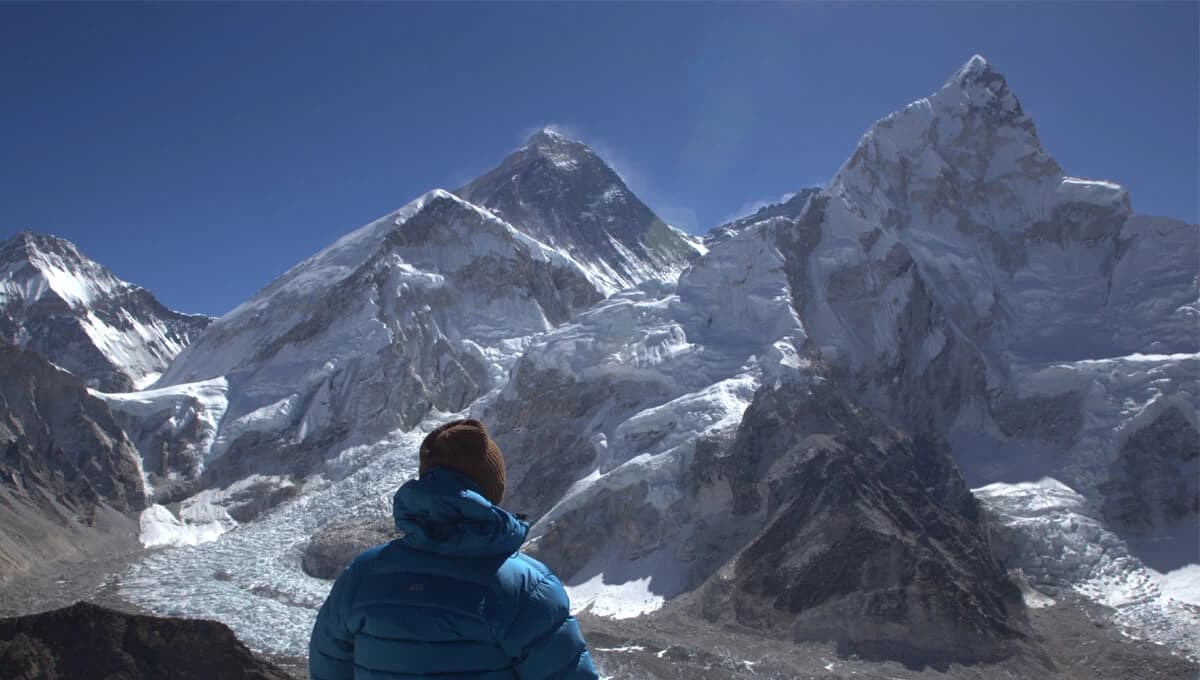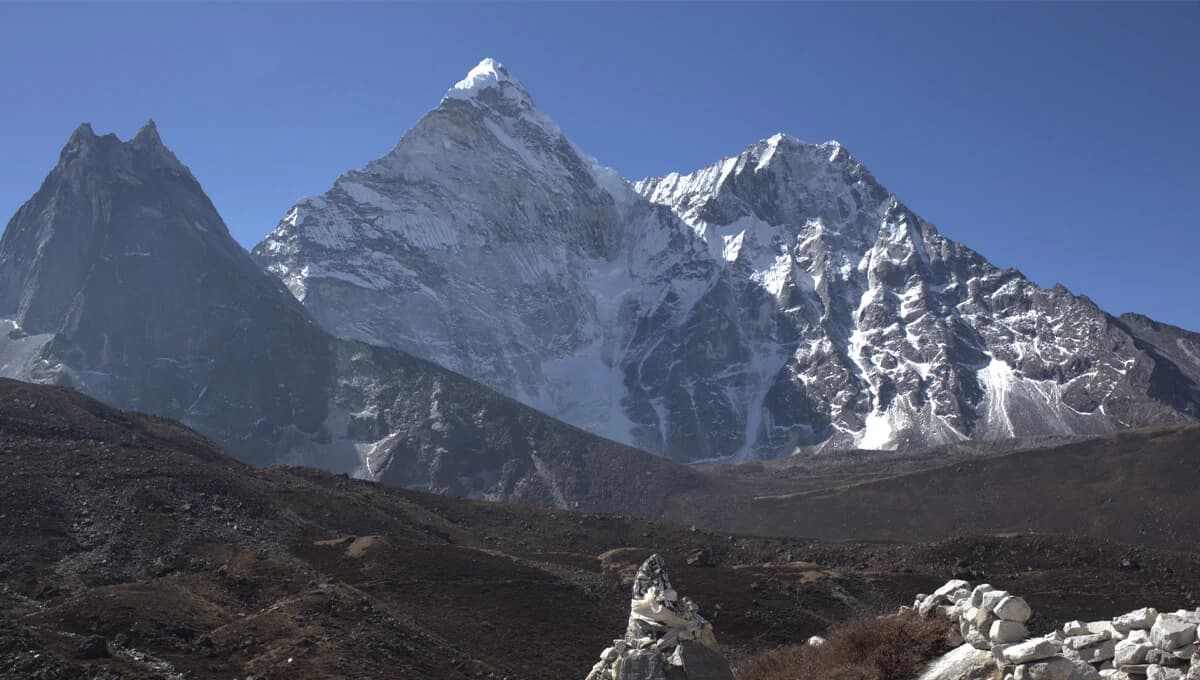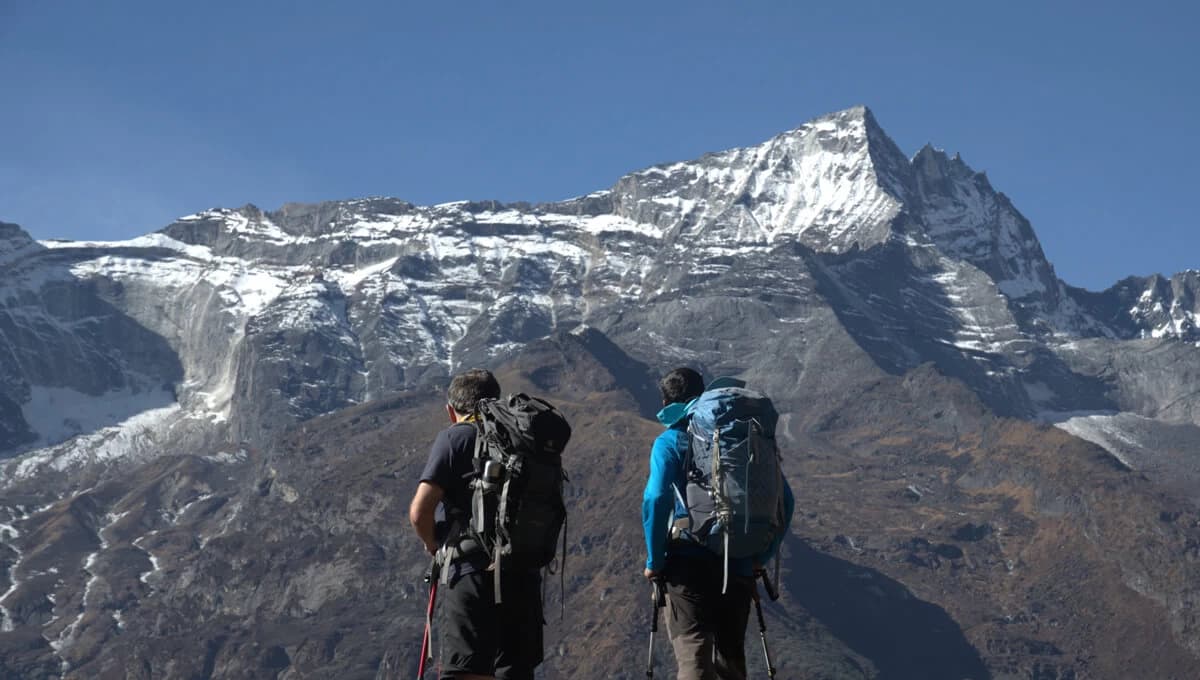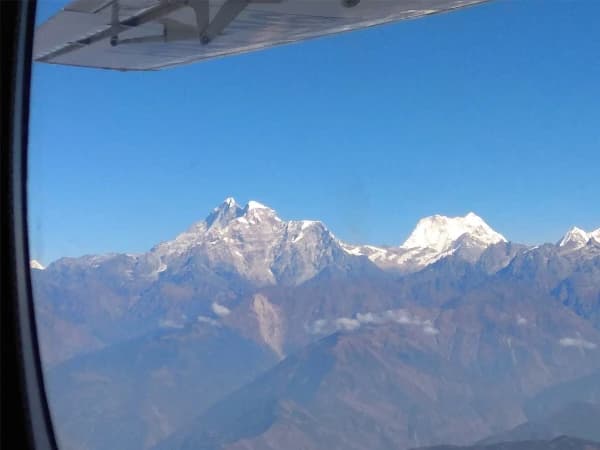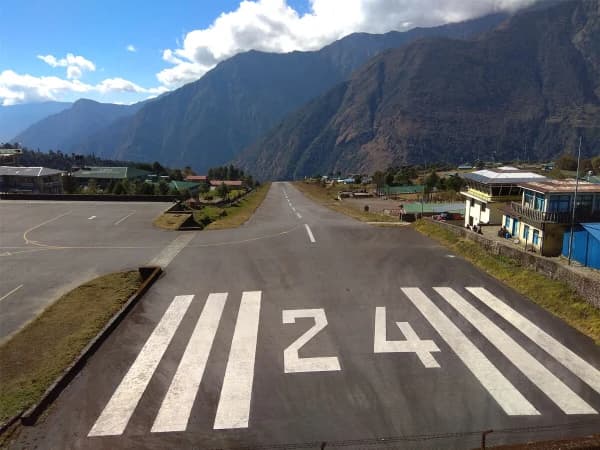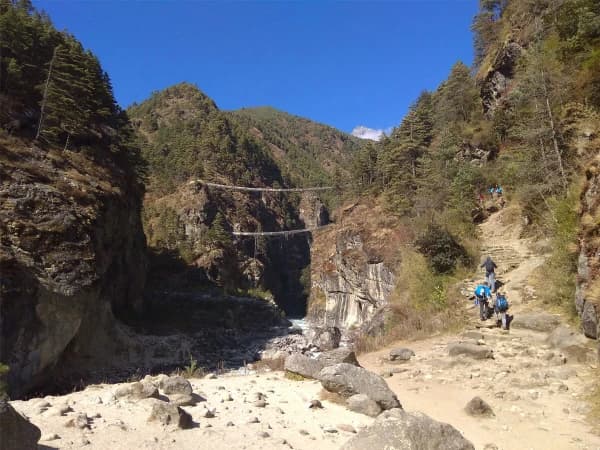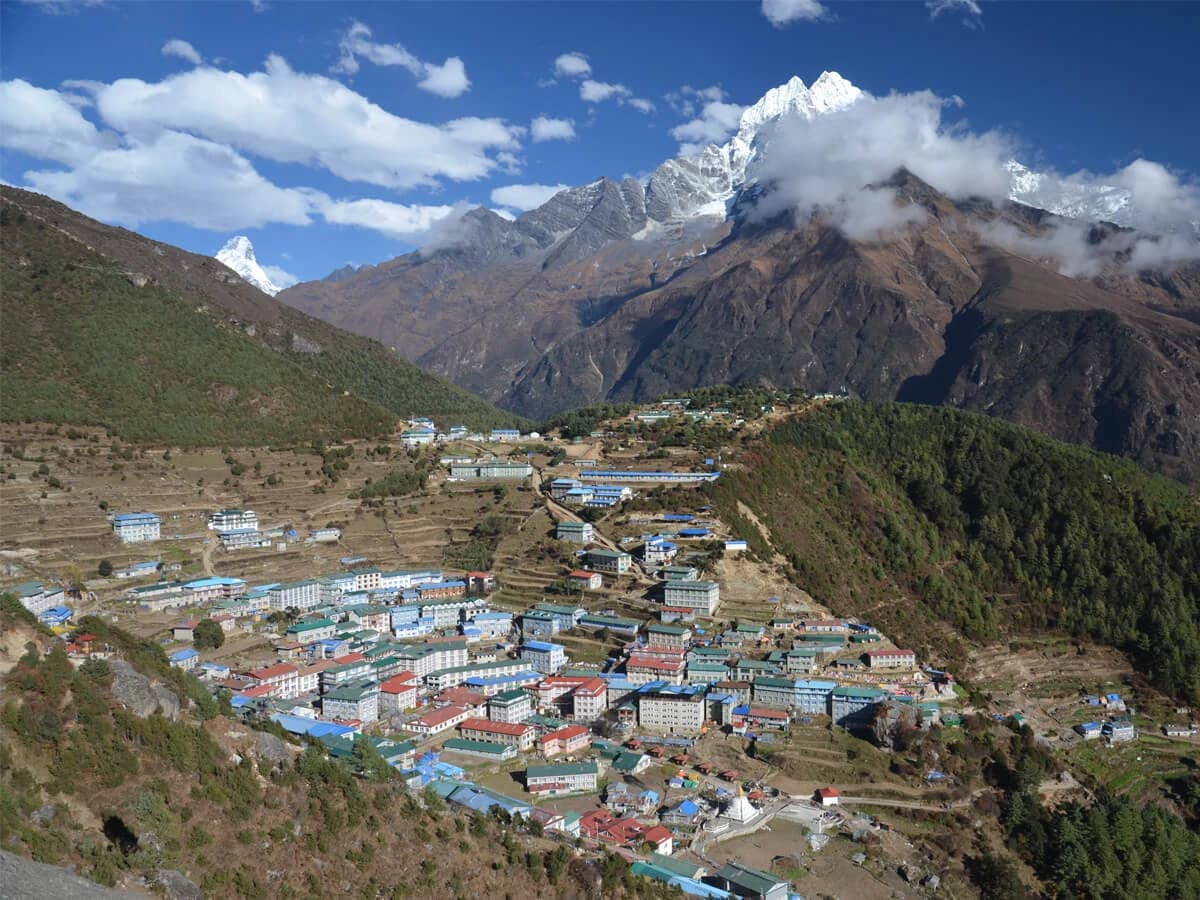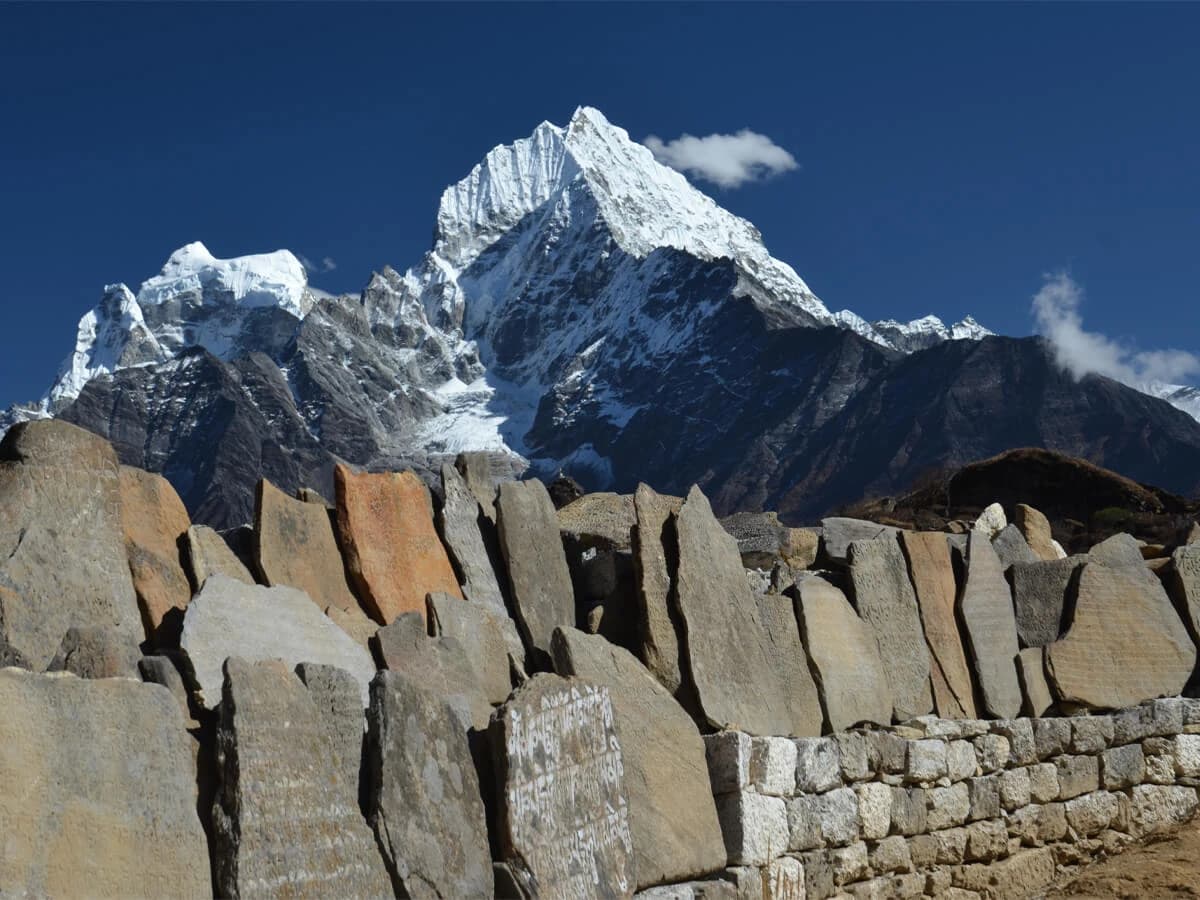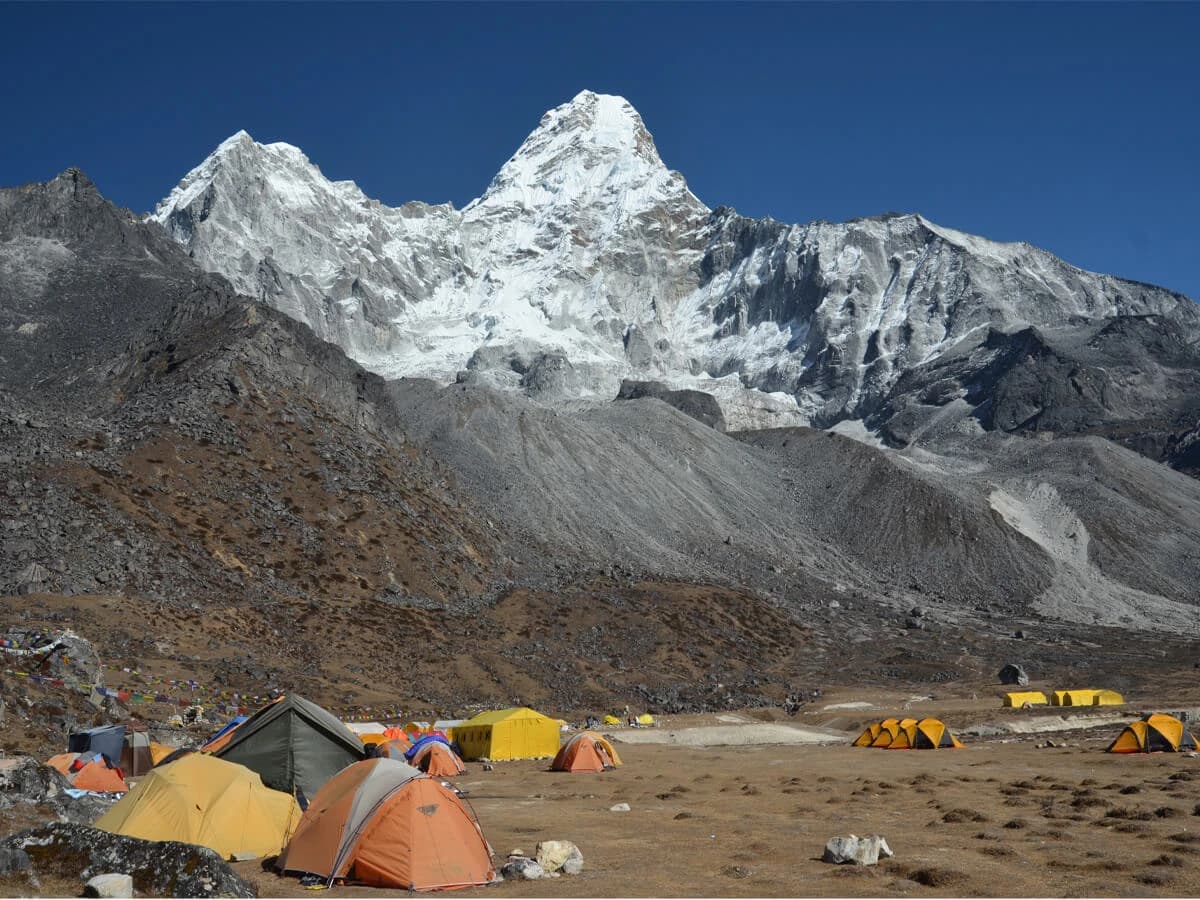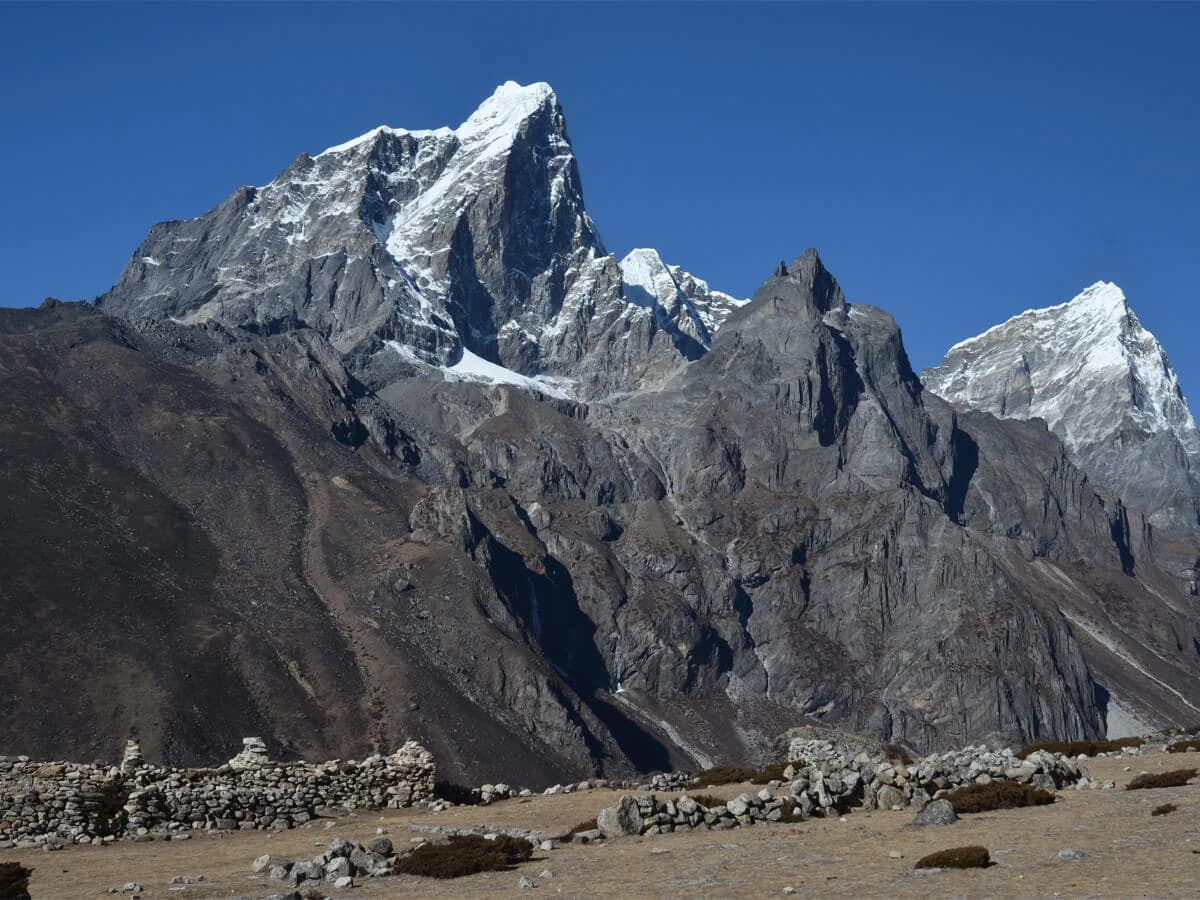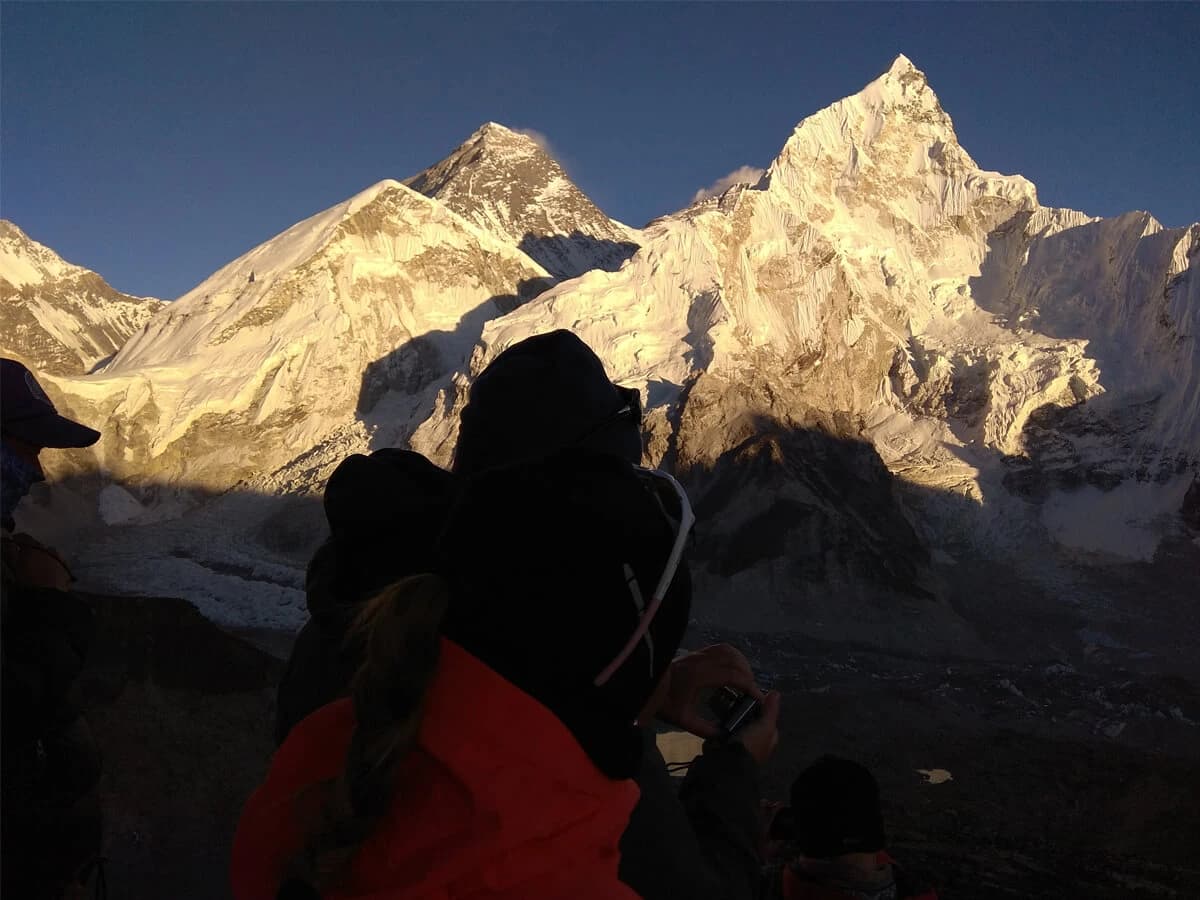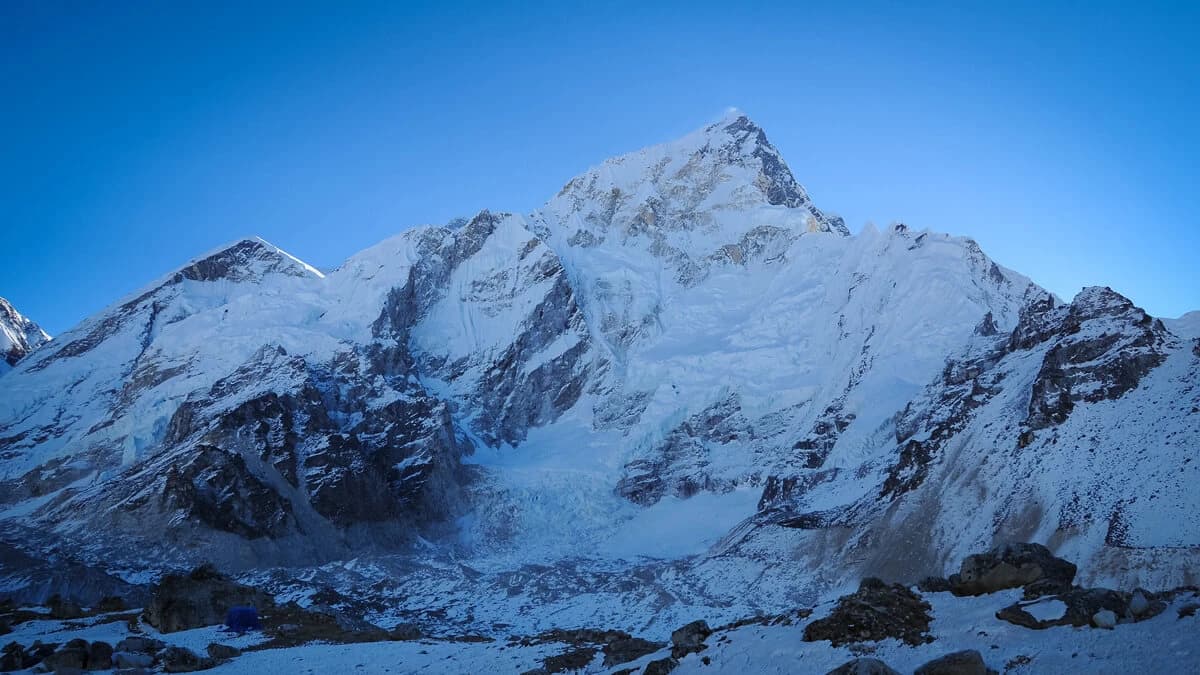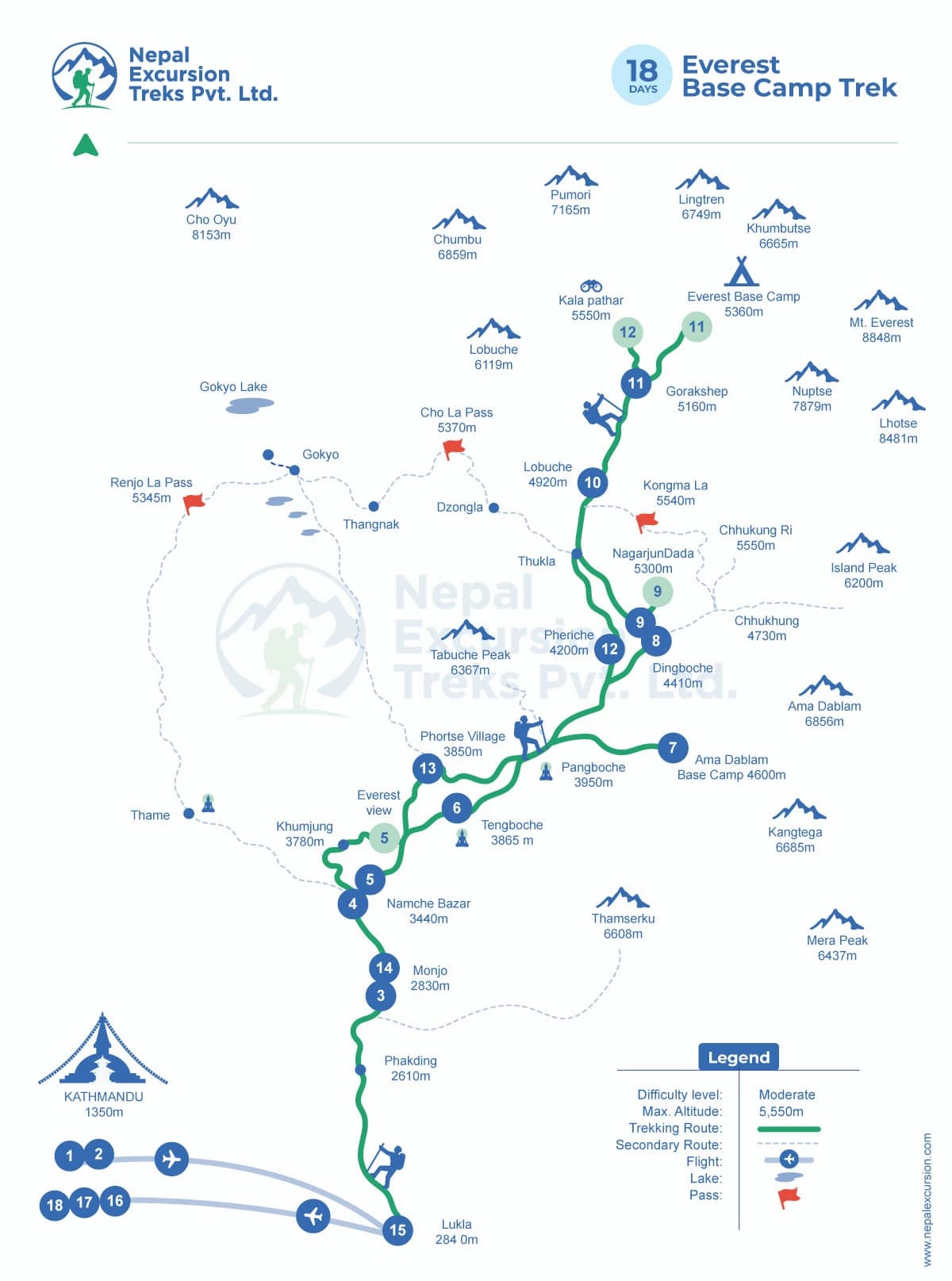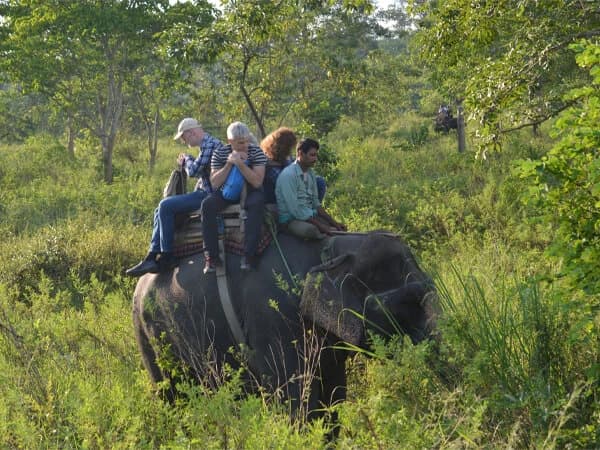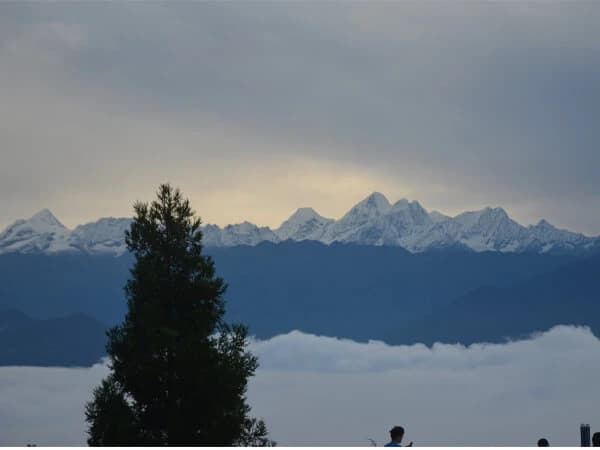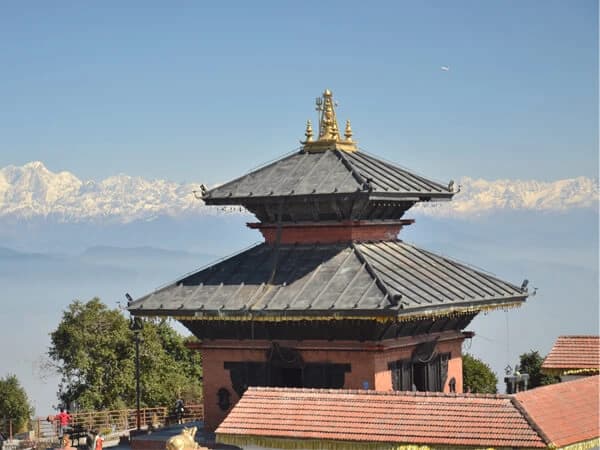Everest Base Camp trek is one of the most popular treks in the world, which has amazing views of mountains, landscapes and cultures. The Everest region has many snow-capped mountains and peaks. Four of the highest mountains in the world are in the Everest Region. Mt. Everest (8848m), Mt. Lhoste (8516m), Mt. Makalu (8445m) Mt. Cho Oyu (8201m) exist in the Everest Region of Nepal, including many snow-capped peaks. You can experience Buddhist culture and the daily lives of Sherpas who are living in the highlands of Nepal during your journey. A few monasteries and beautiful landscapes add to the attraction of this trek. Many people in the world are curious about this trek, and it’s the most popular trek in Nepal, though there are many other nice treks too. It is a demanding trek which offers you stunning views of the mountain chain, including the highest peak in the world. The trip to Everest Base Camp trek starts after 25 25-minute flight to Lukla from Kathmandu. Even this short flight offers you a fantastic view of the mountain chain and beautiful landscape. Once you are in Lukla and starting your trip, you will see many interesting things.
Trekking routes to Everest Base Camp Trek
It's important information for all the trekkers, what the trail to Everest Base Camp looks like. The trail to Everest Base Camp trek and back to Lukla in general is not difficult. Even solo tourists can trek in the Everest region, and to find the trail, it isn’t difficult. During the peak season time there are hundreds of trekkers heading to the Everest Base Camp trail, and one can easily find the hiking trail following the fellow trekkers. If we compare the trekking routes to Everest Base Camp with the Annapurna Base Camp trek, then it's much easier in terms of difficulty, only the altitude is the most demanding on the Everest Base Camp trail. There are just a few points to be careful of while heading to Everest Base Camp. When you are on the way to Gorakshep from Lobuche, and another one is from Gorakshep to Everest Base Camp and back, as you have to walk through glaciers. As the climate changes are taking place in these two points, in some parts the hiking trail differs from each season, as the moment of glacier is taking place. The rest of the part of the trekking route to Everest Base Camp trek in general is a moderate level difficulty trail with some steep ascents and descents. On the way back after the Everest Base Camp trek and Kalapattar, a long way is mostly descended with short ascents. If you are planning to trek on this route during winter or spring, then having crampons is highly recommended.
Cost / Price of Everest Base Camp Trek
The price for the Everest Base Camp trek depends on the standard of the services you choose from your operator. It's worth planning your stay in a 3+ or 4-star category hotel in the city, as the trek, though it is moderate difficult level, after being almost two weeks on a mountain trail, having a bit of luxury stay in Kathmandu makes you feel more relaxed. So the prices of the Everest Base Camp trek vary as the packages cover the services. We have offered a price from individual to group, covering all major attractions of Kathmandu, including UNESCO World Heritage sites. For more details about the price for the Everest Base Camp trek package for different group sizes, please take a look at the right column of this page. The cost of the trip can be customized depending on the services you choose and package inclusions. If the price mentioned as our package to Everest Base Camp trek doesnt suits you then let us know to upgrade the trip to Luxuary or degrade to your budget.
Accommodation and Meals during the Everest Base Camp Trek
There is already a wide range of accommodation available in most parts of the part of Everest Base Camp trek, from budget to luxury. Usually, as per our package, we provide standard accommodation in tea houses. Most of the standard tea houses do not have an attached bathroom/ restroom inside the room. Once you are over 4000 meters, then you may expect the rooms to be cold and sometimes the temperature in the teahouse room can be as low as - 5 degrees even on the higher places like Gorakshep (5160 m) and Lobuche (4925 m) if you are trekking there in late November and winter time. The meals available in the teahouse during the trek to Everest Base Camp are basic but enough for trekkers. You have a wide variety of meals from Nepali, Indian and continental to choose from the menu card and order your meals. Thanks to these tea houses, what they serve, we can just take our backpack and be there and do not have to carry meals by ourselves. In case you are looking for a luxury stay, then you may let us know, and it is possible to plan your stay in mountain three-star category lodges up to Dingboche. In those luxury tea houses, electric heated blankets are available. If you are thinking of upgrading your accommodation to Dingboche, then you have to talk with your trekking company in advance, and an extra fee on top of the package price company can assist with the booking to upgraded lodges.
What to Expect in the Everest Base Camp Trek?
The journey to Everest Base Camp trek certainly has a few challenges. As the Lukla airport is situated in the rural part of Nepal and considered as one of the most dangerous airports in the world, the start of the journey of the flight from Kathmandu to Lukla and back is dependent on weather conditions. Every year, there are cases that, for a few days, even flights couldn't be operated due to bad weather conditions. In such a case, you have to be prepared with your budget that if regular aircraft can't operate the flight, then you have to be prepared for helicopter flights, which are more expensive than flying by aircraft. Once you are in Lukla, there isn't much trouble besides high-altitude mountain sickness. We strongly advise you to prepare with more budget than the package price, just to be safe in case you get stuck in Lukla or in Kathmandu/Manthali airport and still attempt to do the Everest Base Camp trek by taking the helicopter flight. Another reason to be prepared for more budget is for your expenses and tipping for guides/porters, and in case you get altitude sickness and have to use the oxygen during the trek, then you have to pay cash there, which can cost even USD 500, and later you can claim it with your insurance company. Having a few spare days during planning a trip to the Everest Base Camp trek is recommended.If you are ready to take these challenges then you can have the fantastic view of Mt. Everest and its surrounding peaks. The scenery of Everest Base Camp trek is just great!
Internet Access and Mobile Network in the Everest Base Camp Trek
At the lower altitude at Lukla, the hotel has free wifi service, but once you go higher to Phakding, Monjo and higher up, they are selling prepaid wifi cards, and you can just get an internet connection, keeping the username and password in your device. If you are looking for an easy and cheap internet, then it is better to NCELL sim card with 20 GB internet in Kathmandu, and that will be more than enough and very economical. At a few places like Dingboche, Thukla, Lobuche, and Pheriche, the NCELL won't have access to the network. The rest of the trip, the NCELL internet will work really well enough during the trip to Everest Base Camp and back.
Temperatures and weather conditions in the Everest Base Camp Trek
If you are planning a trip to Everest Base Camp Trek during the spring season from February to May, then the temperature is warmer than in Autumn, September to December. The lowest temperature in the spring season you can expect during the trek to Everest Base Camp is about -15 degrees under the worst weather conditions. At the lowest altitude temperature is higher, and as you go higher, the temperature starts to drop. While planning a trekking trip to Everest Base Camp trek during the Autumn season then you have to be prepared for -25 degrees. At the lower altitude up to Tengboche or Dingboche during the day hike, you can walk in shorts, but mornings and evenings are chilly. At the lower altitude in the spring season, it might be misty, and once you are over 3000 metres, then weather conditions are better; however, the spring can be snowy sometimes if the weather is not favourable. Autumn trek in Everest can be cloudy and rainy at the lower altitude if the monsoon is staying longer than usual. The visibility over 3000 metres is generally nice in both seasons. Morning usually is good weather without clouds and mist, and afternoon and evening, you can expect mist and clouds during the Everest Base Camp trek so once you are on a trip to Everest Base camp trek then it is a good idea to start the day early to catch the best views of mountains and landscapes. The rooms in tea houses are really cold once you are over 4000 metres, so you have to be prepared with a warm sleeping bag, a liner to keep extra warm during the night
Backpacking / Gears for Everest Base Camp Trek
Having the proper mountain gears are very essential for the successful trip to Everest Base Camp. The lowest temperature you have to prepare for this trek is up to -20 or 25 degrees in the worst weather condition so depending on your body's adoption of these temperatures every individual adaptation can be vary however for the reference you may have a below list of equipment for a gear list to Everest Base Camp Trek. We will provide one duffle bag to each member to transport luggage during the trek, and for your day bag, about 35-50 litres of backpack is recommended to carry your valuables, spare clothes, water bottle, etc. during the hike.
- Upper Parts: Few pairs of t-shirts (3-4), couple of long sleep shirts, fleece jacket or marino shits, One down jacket, light glove, thick glove with water/windproof outer shell, waterproof jacket, windstopper, scarf for neck/ head, warm hat, sun hat, sunglass uv protection, suncream (+40 or more), trekking poles
- Lower Parts: few pairs of shorts (2-3), underwear - 4-5 pairs, one trekking trouser, fleece or merino warm underpants, waterproof/ windproof trouser, gaiters, few pairs light trekking socks (3-4), warm socks -2 pairs, micro crampons, trekking shoes, light sport shoes or sandal
- Toiletries: One quick-drying towel, antibacterial hand gel, toothpaste, tooth brush, shower gel, soap, toilet paper, tissue paper, nail cutter, face cream, wet wipes,
- Miscellaneous: First aid kit, headlight with batteries, trekking maps, camera, books, water bottle, chargers, powerbank, water purifying tablets, vitamins, minerals, sleeping bag - 20 degrees minimum, small lock to secure your main luggage, etc.
